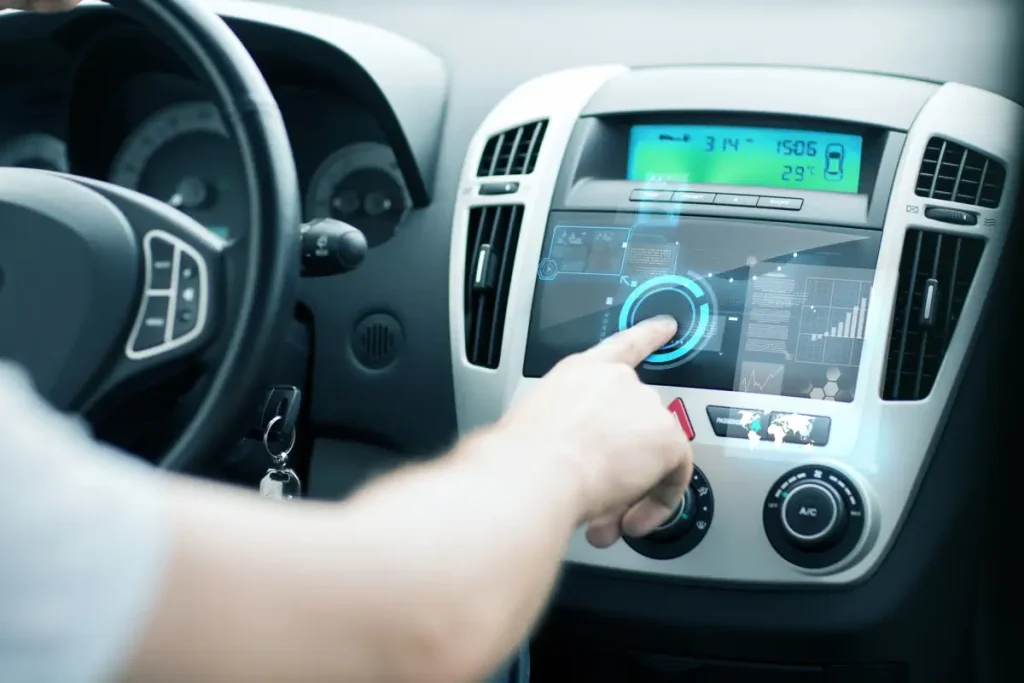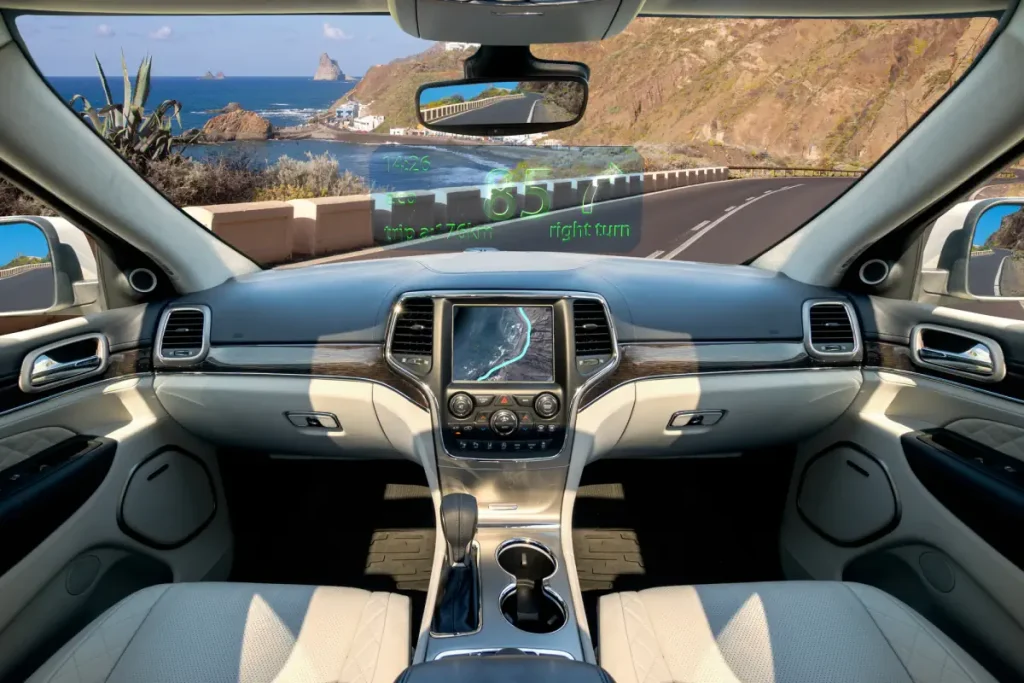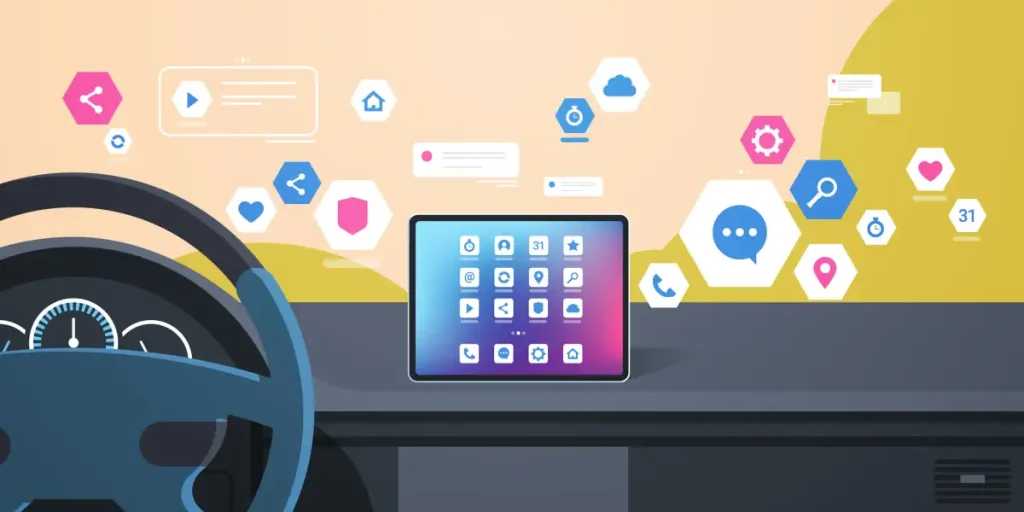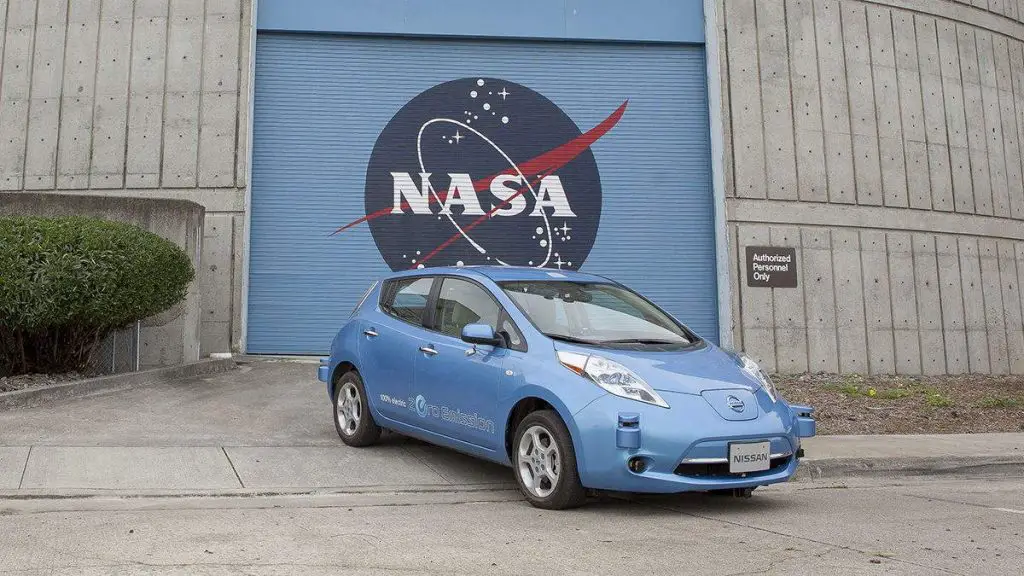Many opinions are circulating about electric vehicles and emerging technology. Some people are on board (Tesla fans) and others are on the fence for now. Car manufacturers and technology companies are coming out of the woodwork, showcasing the latest advancements in car technology. Here are the 8 revolutionary future car technologies.
The doors of possibility are wide open with features such as active window display, multi-facial recognition, exterior sensors, and environmental improvements.
We may not have flying cars as “Back to the Future II” predicted, but the emerging car technology of the next few years is not far off. CarRentals has put together an infographic outlining the major technological advancements of the future.
Revolutionary Future Car Technologies
1. Biometric vehicle access

Biometric vehicle access is a technology that uses biometric data, such as fingerprints, facial recognition, or iris scans, to control access to vehicles. This technology is designed to provide a secure and convenient way for drivers to unlock and start their vehicles without the need for keys or other physical devices.
Biometric vehicle access systems use sensors to capture biometric data from the driver, which is then compared to stored data in order to confirm the driver’s identity. If the data matches, the system unlocks the vehicle and allows the driver to start it. If the data does not match, the system will prevent access to the vehicle.
Biometric vehicle access systems are becoming increasingly common in modern vehicles, especially high-end models. They offer a number of benefits, including enhanced security, convenience, and personalization. For example, a biometric vehicle access system can allow multiple drivers to use the same vehicle, each with their own unique biometric data, without the need for additional keys or fobs.
2. Active health monitoring
Active health monitoring in cars is a technology that uses sensors and other monitoring devices to track the health and well-being of drivers and passengers. This technology is designed to provide real-time data on a range of physiological and behavioral factors, including heart rate, respiration, blood pressure, fatigue, and stress levels.
Active health monitoring systems in cars can be integrated into a variety of vehicle systems, such as the infotainment system, the seat, or the steering wheel. They use sensors and other monitoring devices to capture data from the driver and passengers, which is then analyzed and used to provide feedback and alerts.
For example, an active health monitoring system may alert a driver if their heart rate or respiration rate is elevated, indicating that they may be experiencing stress or fatigue. The system may also provide recommendations for improving driver health and safety, such as taking a break or adjusting the vehicle’s temperature or lighting.
Overall, active health monitoring in cars is a valuable technology that is helping to improve the safety and well-being of drivers and passengers. It has the potential to reduce the risk of accidents and injuries caused by fatigue or stress, and it can also help drivers to maintain their health and well-being while on the road.
3. Reconfigurable body panels
Reconfigurable body panels are panels or components of a vehicle’s exterior that can be changed or modified to alter the appearance or functionality of the vehicle. These panels may be made of materials such as plastic, metal, or composite materials, and they can be easily removed, added, or modified to change the look or performance of the vehicle.
There are several potential uses for reconfigurable body panels in cars. For example, they can be used to alter the aerodynamics of a vehicle by changing the shape or position of panels in order to improve fuel efficiency or handling. They can also be used to change the appearance of a vehicle by adding or removing panels that affect the overall shape or style of the vehicle.
Reconfigurable body panels may be controlled manually by the driver or automatically by the vehicle’s computer system. They may be activated through buttons, switches, or other controls, or they may be triggered automatically based on certain conditions, such as the speed of the vehicle or the weather conditions.
4. Liquid-printed pneumatics

Liquid-printed pneumatics in cars is a technology that uses 3D printing and liquid materials to create flexible, responsive, and lightweight pneumatic components for vehicles. These components, which may include hoses, tubes, seals, airbags, and other items, are designed to be lightweight, durable, and able to withstand high pressures and temperatures.
One of the key benefits of liquid-printed pneumatics in cars is that they can be customized to fit the specific needs of a particular vehicle. For example, a liquid-printed pneumatic hose might be designed to fit a specific shape or space in a vehicle, or it might be customized to meet the specific pressure or temperature requirements of a particular system.
Another benefit of liquid-printed pneumatics is that they can be produced quickly and cost-effectively using 3D printing technology. This allows manufacturers to produce pneumatic components on demand, rather than having to keep large inventories of pre-made components on hand.
5. Brain wave technology
It is a technology that uses sensors and other monitoring devices to capture and interpret brain activity in order to control or interact with a vehicle. This technology is designed to allow drivers to control certain aspects of their vehicles simply by thinking about them, rather than using traditional inputs such as buttons, switches, or pedals.
Brain wave technology in cars typically involves the use of sensors that are placed on the head or forehead of the driver. These sensors capture brain activity and transmit it to a computer system, which is then able to interpret the data and use it to control various aspects of the vehicle.
For example, brain wave technology might be used to allow a driver to start or stop their vehicle simply by thinking about it. It might also be used to adjust the speed or direction of the vehicle based on the driver’s thoughts or emotions.
It is a promising but still emerging technology. While it has the potential to improve the safety and convenience of driving, it also raises some ethical and privacy concerns, as it involves the collection and interpretation of sensitive personal data. As such, it will likely continue to be the subject of research and development in the coming years.
6. Active window display

It is a technology that uses transparent displays or projections to display information or images on the windows of a vehicle. This technology is designed to allow drivers and passengers to access information or entertainment without having to look away from the road or interrupt their driving experience.
Active window displays in cars may be integrated into the windows of the vehicle or may be projected onto the windows from external sources. They may be used to display a variety of information, such as maps, directions, traffic updates, weather forecasts, or entertainment content.
Active window displays in cars can be controlled by the driver or passengers using buttons, voice commands, or other inputs. They may also be linked to other vehicle systems, such as the infotainment system or the navigation system, to provide information and updates in real time.
Overall, it is a valuable technology that can help to improve the safety and convenience of driving by allowing drivers and passengers to access information and entertainment without having to look away from the road. They also have the potential to enhance the overall driving experience by providing a more immersive and interactive environment.
7. Enhanced surrounded view cameras
These cameras are mounted on the exterior of a vehicle to provide a 360-degree view of the surrounding environment. These cameras are designed to help drivers to see more of their surroundings and to improve visibility when driving, parking, or maneuvering in tight spaces.
Enhanced surrounded view cameras in cars may be integrated into the vehicle’s exterior mirrors, or they may be mounted on the front, rear, or sides of the vehicle. They may be connected to a central display system, such as a dashboard display or a head-up display, which allows the driver to see the camera views in real time.
They can be especially useful in situations where visibility is limited, such as when driving in poor weather conditions, at night, or in busy urban areas. They can also be helpful when parking or maneuvering in tight spaces, as they can provide a more comprehensive view of the surrounding environment and help drivers to avoid obstacles or other hazards.
8. Car-to-X communication

Car-to-X communication (also known as Vehicle-to-Everything or V2X communication) is a type of wireless communication technology that enables vehicles to communicate with other vehicles, infrastructure, and devices in their surroundings. It uses dedicated short-range communication (DSRC) or cellular network technologies to exchange information in real time.
One of the main benefits of Car-to-X communication is that it can improve road safety by enabling vehicles to detect potential hazards and alert drivers of them. For example, if a car ahead brakes suddenly, a Car-to-X communication system can send a warning to the driver of the following vehicle, allowing them to react in time to avoid a collision. Car-to-X communication can also be used to improve traffic flow by allowing vehicles to communicate with traffic lights and other infrastructure to coordinate their movements.
In addition to improving safety and traffic flow, Car-to-X communication can also be used for a variety of other purposes. For example, it can be used to provide drivers with real-time traffic information, help them find parking spaces, or enable emergency services to locate vehicles in the event of an accident.
- Moon Landings: All-Time List [1966-2025] - February 2, 2025
- What Is Max-Q and Why Is It Important During Rocket Launches? - January 16, 2025
- Top 10 Tallest Rockets Ever Launched [2025 Update] - January 16, 2025

